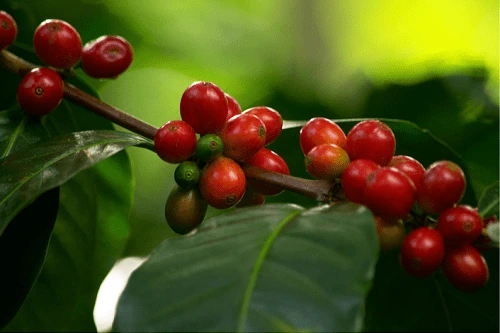Coffee
Coffee Processing Methods: Washed, Honey, Natural
Coffee is one of the most beloved beverages worldwide, and its popularity continues to grow. However, have you ever wondered about the journey that coffee beans go through before reaching your cup? Coffee processing methods play a crucial role in shaping the flavors and characteristics of the final product. In this article, we will delve into three commonly used coffee processing methods: washed, honey, and natural. We will explore the unique steps involved in each method and uncover the impact they have on the taste and aroma of your favorite morning brew.
Introduction
Coffee processing is a critical step in transforming raw coffee cherries into the familiar beans we know. It involves removing the fruit and drying the beans to prepare them for roasting. The processing method chosen can greatly influence the flavor, acidity, body, and overall profile of the coffee.
The Washed Method
The washed method, also known as the wet method, is widely recognized for producing clean and bright coffee. Here, the freshly harvested cherries are immersed in water to separate the beans from the pulp. The beans undergo fermentation to remove any remaining fruit residues, followed by thorough washing and drying. This method emphasizes clarity and acidity, resulting in a crisp and vibrant cup of coffee.
- The washed method, also known as the wet method, is widely recognized for producing clean and bright coffee.
- This method involves immersing freshly harvested coffee cherries in water to separate the beans from the pulp.
- The beans undergo fermentation to remove any remaining fruit residues, followed by thorough washing and drying.
- The washed method emphasizes clarity and acidity, resulting in a crisp and vibrant cup of coffee.
- Steps in the washed method include sorting and selecting ripe cherries, pulping to remove the skin and pulp, fermentation to break down mucilage, washing to remove residue, and drying on patios or raised beds.
- The washed method is favored for its ability to highlight the inherent flavors of the coffee beans.
- It often produces coffees with bright acidity, floral notes, and a clean finish.
- The meticulous attention to detail and precise control throughout the process contribute to the consistent and high-quality results associated with the washed method.
The Honey Method
The honey method, sometimes referred to as pulped natural or semi-washed, strikes a balance between the washed and natural methods. After harvesting, the cherries are pulped to remove the skin, but some of the sticky mucilage is intentionally left on the beans. They are then dried with the mucilage intact, imparting unique flavors and sweetness. The honey method can produce coffees with varying levels of body, sweetness, and acidity, depending on the amount of mucilage retained during drying.
- The honey method, also known as pulped natural or semi-washed, strikes a balance between the washed and natural methods.
- After harvesting, the ripe coffee cherries undergo pulping to remove the outer skin, but some of the sticky mucilage is intentionally left on the beans.
- The beans are then dried with the mucilage intact, which imparts unique flavors and sweetness.
- Variations in the drying process lead to different types of honey processing, such as white honey, yellow honey, and red honey.
- White honey processed coffees exhibit delicate flavors with floral and tea-like notes, while yellow honey coffees have a more pronounced sweetness with hints of stone fruits and caramel.
- Red honey processed coffees are known for intense sweetness and flavors reminiscent of ripe berries, chocolate, and honey.
- The honey method allows the beans to retain some of their natural sugars, resulting in a sweeter cup with distinct flavor nuances.
- The meticulous monitoring of the mucilage during drying ensures even fermentation and prevents spoilage.
- Coffee processed using the honey method can exhibit a balanced acidity, medium body, and a wide range of flavors depending on the drying technique employed.
The Natural Method
The natural, or dry, method is the oldest and most traditional way of processing coffee. In this method, the cherries are dried whole, allowing the beans to absorb flavors from the fruit. The cherries are spread out on patios or raised beds and turned regularly to ensure even drying. Once dry, the dried fruit is removed, revealing coffee beans with rich and full-bodied flavors. Natural-processed coffees often exhibit fruity, wine-like characteristics.
- The natural method, also known as the dry method, is the oldest and most traditional way of processing coffee.
- In this method, the coffee cherries are dried intact, allowing the beans to absorb flavors from the fruit during the drying process.
- The cherries are carefully sorted, and only ripe ones are selected for the natural method.
- The selected cherries are spread out on large patios or raised beds to dry naturally under the sun.
- Regular turning of the cherries ensures even drying and prevents the growth of mold or fungus.
- The natural drying process can take several weeks, depending on the weather conditions.
- Once the cherries are fully dried, they are processed to remove the outer layers, revealing the green coffee beans within.
- The natural method often results in coffee with rich, full-bodied flavors and a pronounced sweetness.
- Natural-processed coffees can exhibit a wide range of fruity notes, such as berries and tropical fruits.
- Skillful monitoring and careful handling are crucial throughout the drying process to maintain the quality of natural-processed coffees.
A Comparison of Flavor Profiles
Each coffee processing method contributes distinct flavors to the final cup. Washed coffees are known for their bright acidity, floral notes, and clean finish. Honey-processed coffees offer a range of flavors, from delicate fruitiness to caramel-like sweetness. Natural coffees boast intense fruit flavors, heavy body, and a pronounced sweetness.
Factors Influencing Processing Methods
Several factors influence the choice of coffee processing method. Climate, altitude, local traditions, and availability of water all play a role in determining which method is used. Additionally, the desired flavor profiles and market trends also influence the decision-making process. Certain regions or coffee farms may specialize in specific processing methods based on their resources and expertise.
- Climate: The climate of the coffee-growing region plays a significant role in determining the appropriate processing method. Factors such as humidity, rainfall, and temperature affect the drying process and can influence the choice of method.
- Altitude: The altitude at which coffee is grown affects the maturation rate of the cherries. Higher altitudes often result in slower ripening, which may influence the choice of processing method to ensure optimal flavor development.
- Local Traditions: Coffee processing methods are often influenced by long-standing traditions and practices in specific regions. Cultural preferences and historical knowledge of processing methods can shape the choice of method.
- Water Availability: Some processing methods, such as the washed method, require a significant amount of water. The availability of water resources in a coffee-growing area may impact the feasibility and sustainability of certain processing methods.
- Flavor Profiles: The desired flavor characteristics of the final coffee product can also influence the processing method chosen. Different methods can accentuate certain flavor profiles, such as brightness and clarity in washed coffees or fruit-forward notes in natural processed coffees.
- Market Demand: The preferences and demands of the coffee market can influence the choice of processing methods. Certain regions may focus on processing methods that are in high demand or have gained popularity among consumers.
- Farm Resources: The resources available to coffee farmers, such as equipment, infrastructure, and labor, can impact the choice of processing method. Different methods may require specific machinery or manual labor, which farmers must consider when deciding on the most suitable approach.
- Sustainability Considerations: Increasingly, coffee producers and consumers are prioritizing sustainable practices. Factors such as water usage, energy consumption, and waste management influence the sustainability of different processing methods.
The Art of Roasting
After the coffee beans have been processed, they are ready for roasting. Roasting is a crucial step that transforms the green beans into aromatic, flavorful coffee. Roasters carefully control temperature and time to unlock the desired flavors and characteristics. The choice of processing method can influence how the beans react during roasting and the potential flavor profiles that can be achieved.
- Roasting is a crucial step in the coffee journey that transforms green coffee beans into aromatic, flavorful coffee.
- Skilled roasters carefully control temperature, time, and other variables to achieve desired flavor profiles.
- The roasting process involves applying heat to the beans, causing them to undergo chemical and physical changes.
- As the beans heat up, they undergo various stages, including drying, browning, and development of complex flavors.
- Roasters use their expertise and sensory skills to determine the ideal roast level for different coffee beans.
- Roast levels can range from light (for delicate and nuanced flavors) to dark (for bold and robust flavors).
- During roasting, the beans release moisture and carbon dioxide, leading to the familiar “cracking” sounds.
- Roasters carefully monitor these audible cues and adjust the roast accordingly.
- The roasting process can bring out specific characteristics in the beans, such as acidity, body, and aroma.
- The art of roasting requires experience, precision, and a deep understanding of coffee profiles.
Coffee Processing Trends
The coffee industry is constantly evolving, and new processing methods are emerging. Experimental techniques like carbonic maceration, freeze-drying, and controlled fermentation are pushing the boundaries of flavor development. These innovative approaches offer exciting possibilities for coffee enthusiasts seeking unique and exceptional taste experiences.
Exploring Alternative Methods
In recent years, there has been a surge of interest in alternative coffee processing methods. Some farmers and roasters are experimenting with hybrid techniques, blending aspects of different processing methods to create novel flavor profiles. These experiments showcase the ingenuity and creativity within the coffee industry.
The Future of Coffee Processing
As consumer preferences continue to evolve, coffee processing methods will adapt to meet changing demands. Sustainability, traceability, and flavor diversity will likely remain key considerations. Advancements in technology and increased collaboration between farmers, researchers, and industry professionals will drive further innovation in the field of coffee processing.
Conclusion
Coffee processing methods significantly impact the taste and aroma of the coffee you enjoy. From the washed method’s clean and bright flavors to the honey method’s sweetness and the natural method’s fruit-forward profiles, each technique brings its own charm. Understanding the intricacies of coffee processing allows us to appreciate the craftsmanship behind every cup. So, the next time you savor your morning brew, take a moment to think about the journey those beans have undergone.
FAQs
- What is the best coffee processing method? The best coffee processing method is subjective and depends on personal taste preferences. Experimenting with different methods can help you discover your favorite flavors.
- Are certain processing methods more sustainable than others? Yes, some processing methods, like eco-pulping and anaerobic fermentation, are considered more sustainable due to their reduced water usage and eco-friendly practices.
- Can I try different processing methods at home? While professional coffee processing requires specialized equipment, you can experiment with different brewing methods that highlight the unique characteristics of different processing techniques.
- How do coffee farmers decide which processing method to use? Coffee farmers consider factors such as climate, altitude, resources, and market demand when choosing a processing method that aligns with their goals and available resources.
- Does the processing method affect the caffeine content of coffee? The processing method itself does not significantly impact the caffeine content of coffee. However, variations in bean density and moisture content, which can be influenced by processing, may affect caffeine levels slightly.

